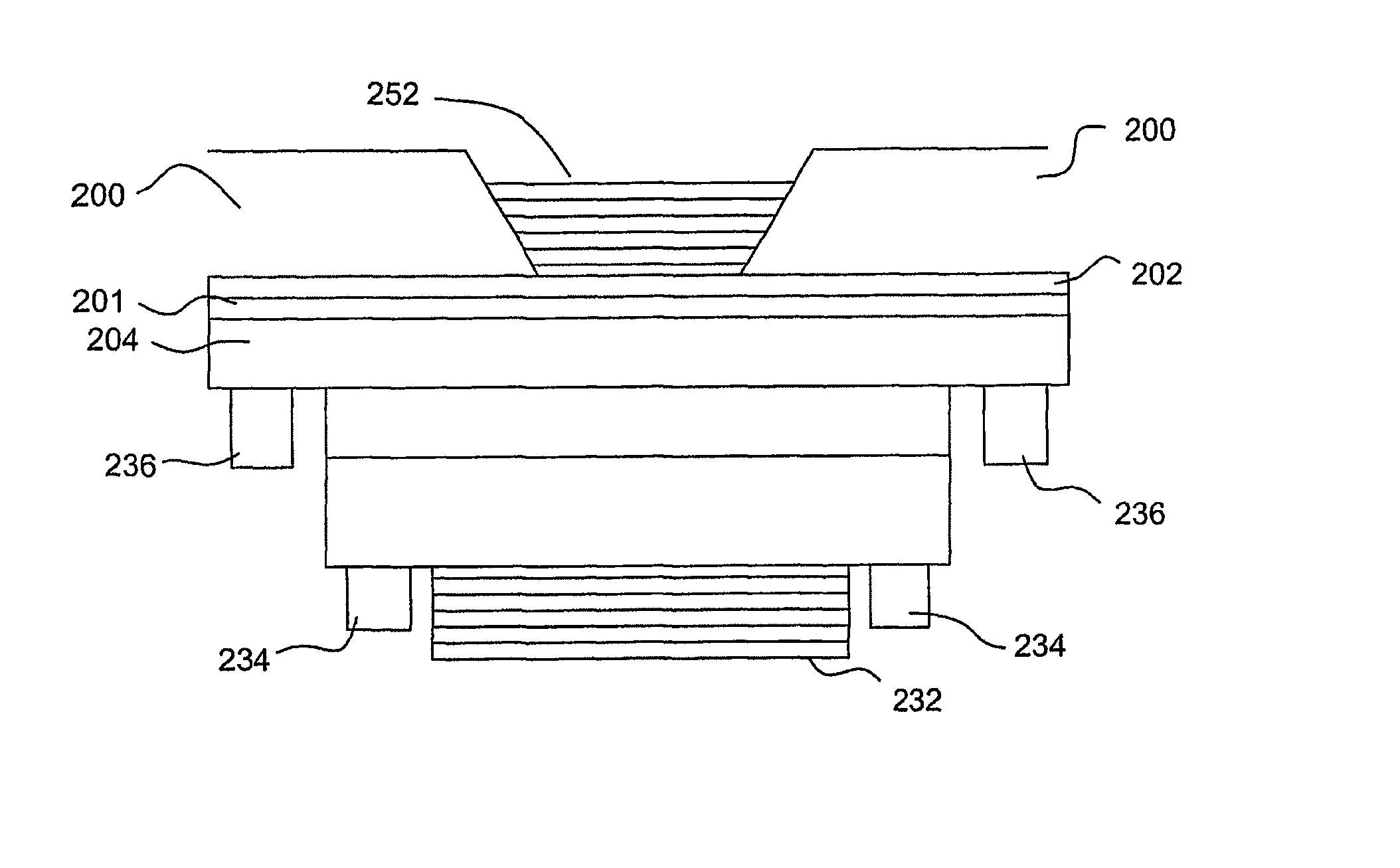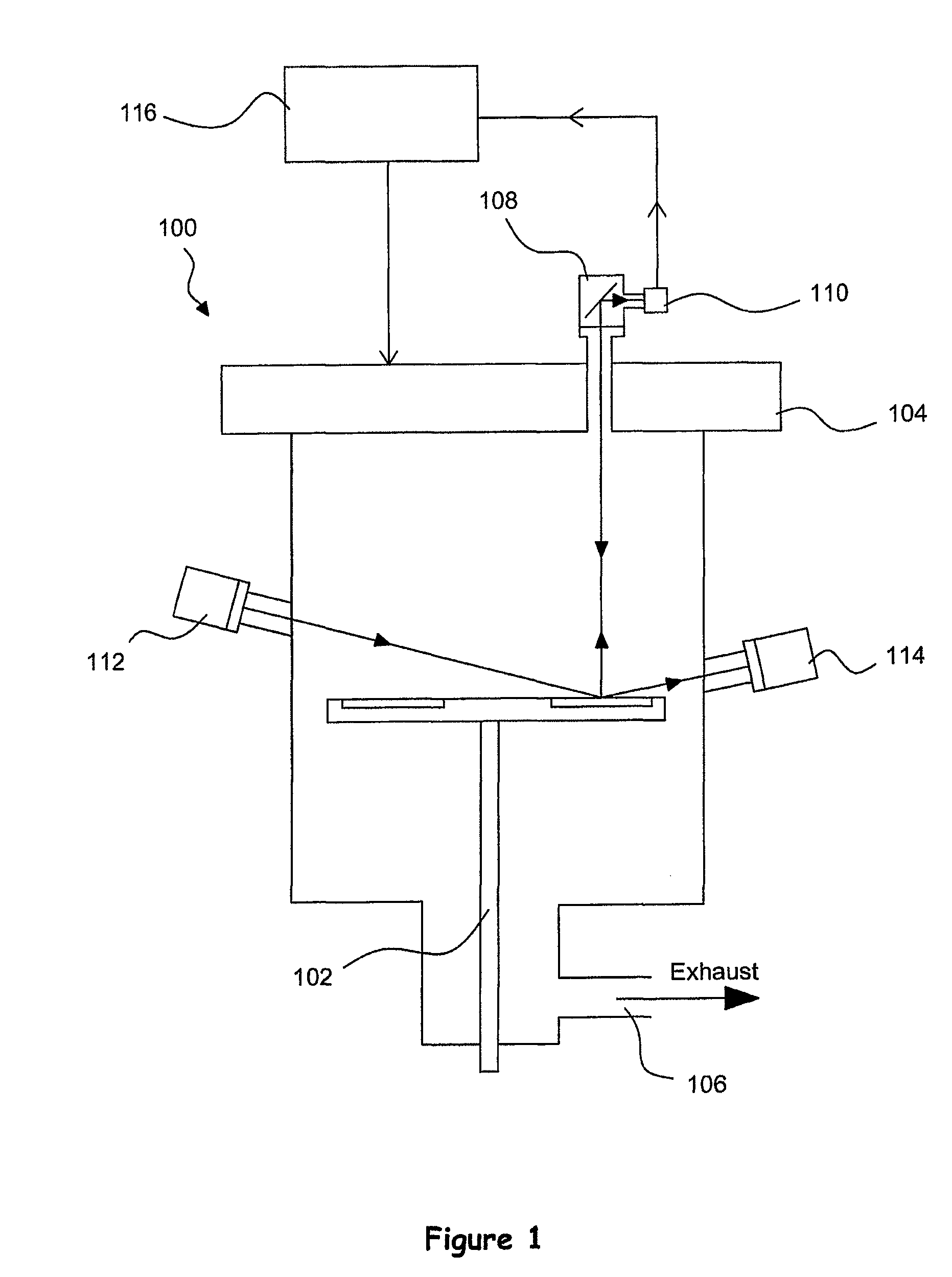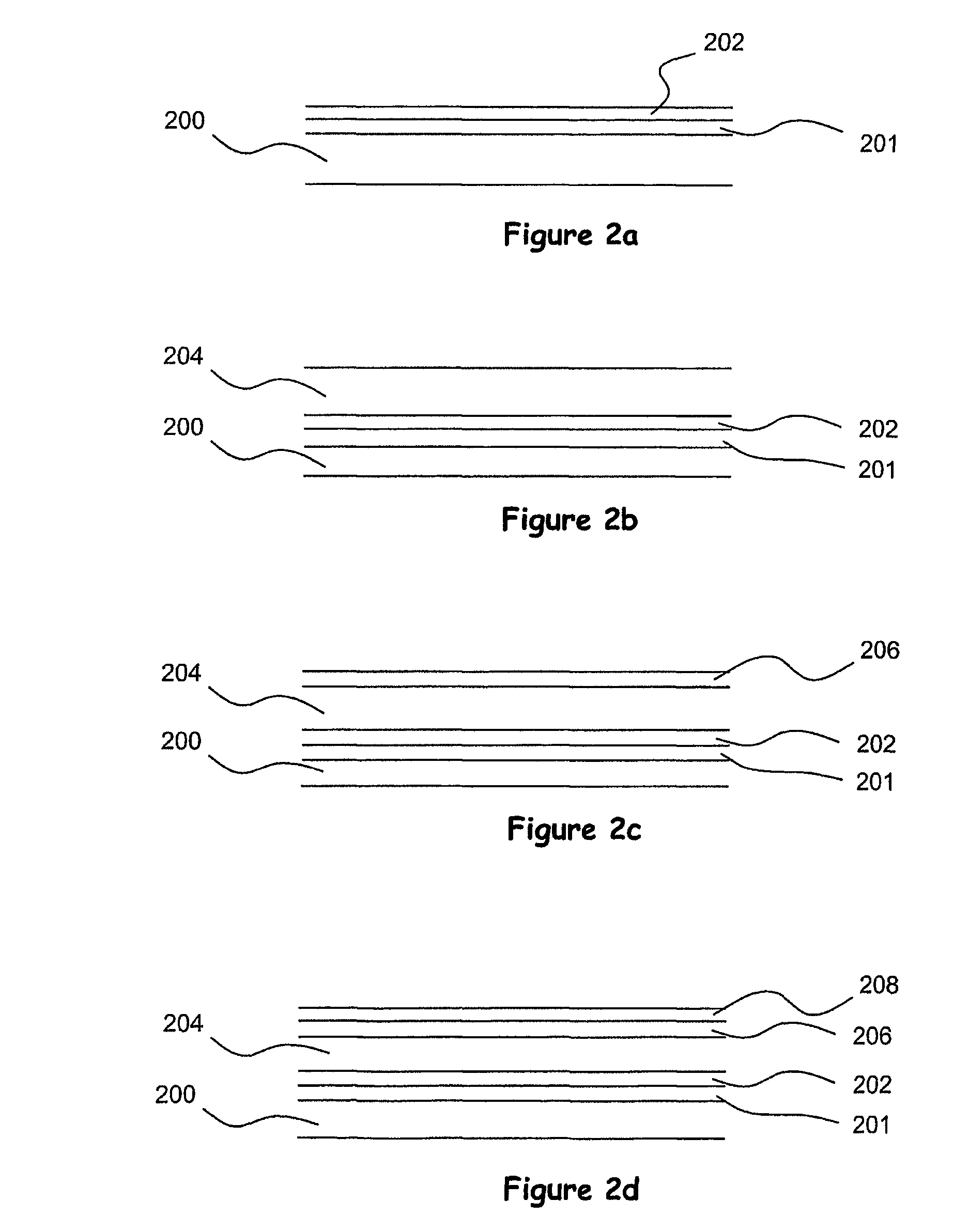Semiconductor Materials and Devices
a technology of semiconductor materials and materials, applied in the direction of semiconductor devices, lasers, semiconductor lasers, etc., can solve the problem of reducing the likelihood of dislocation in the finished structure, and achieve the effect of good etch selectivity and less damage to other parts of the structur
- Summary
- Abstract
- Description
- Claims
- Application Information
AI Technical Summary
Benefits of technology
Problems solved by technology
Method used
Image
Examples
first embodiment
[0046] The growth of a VCSEL device for emission in the violet spectral region according to the invention will now be described. FIG. 2(a) shows a gallium nitride substrate 200, typically 300 μm thick. The substrate typically comprises a lower layer that has been grown comparatively quickly (to provide cost-effective manufacture) and an upper layer that has been grown comparatively slowly (to provide a smooth surface for subsequent growth). Alternatively the lower layer could be a substrate of a different material such as sapphire. In FIG. 2(a) the smooth surface is shown uppermost. On this upper surface is grown a gallium nitride buffer layer 201 that has optical properties that are substantially the same as those of the gallium nitride substrate 200. This has a thickness of 1 micron. As will be appreciated, this layer 201 is optional. On the buffer layer 201 is an Al0.83In0.17N layer 202 that is grown by MOVPE (also known as MOCVD). This provides a very good in-plane lattice match...
second embodiment
[0069] In the examples above, the growth was conducted using MOCVD. However, other growth techniques are possible such as Molecular Beam Epitaxy (MBE). MBE generally has a more predictable (albeit slower) growth rate than MOCVD so it might be possible to grow the active region in a VCSEL using MBE without requiring optical monitoring. However, the use of the growth facilitation layer for either stopping an etch process or detecting when such a process should be stopped would still apply. The modified technique of the second embodiment could also be applied to remove the fabrication facilitation layer using a wet etch.
[0070] A skilled person will appreciate that variations of the disclosed arrangements are possible without departing from the invention. For example, whilst the AlxInyGa1-x-yN fabrication facilitation layer is described as being a single layer, it could be implemented as multiple layers, for example as a superlattice structure. Equally, rather than having a uniform comp...
PUM
| Property | Measurement | Unit |
|---|---|---|
| thickness | aaaaa | aaaaa |
| thickness | aaaaa | aaaaa |
| temperatures | aaaaa | aaaaa |
Abstract
Description
Claims
Application Information
 Login to View More
Login to View More - R&D
- Intellectual Property
- Life Sciences
- Materials
- Tech Scout
- Unparalleled Data Quality
- Higher Quality Content
- 60% Fewer Hallucinations
Browse by: Latest US Patents, China's latest patents, Technical Efficacy Thesaurus, Application Domain, Technology Topic, Popular Technical Reports.
© 2025 PatSnap. All rights reserved.Legal|Privacy policy|Modern Slavery Act Transparency Statement|Sitemap|About US| Contact US: help@patsnap.com



